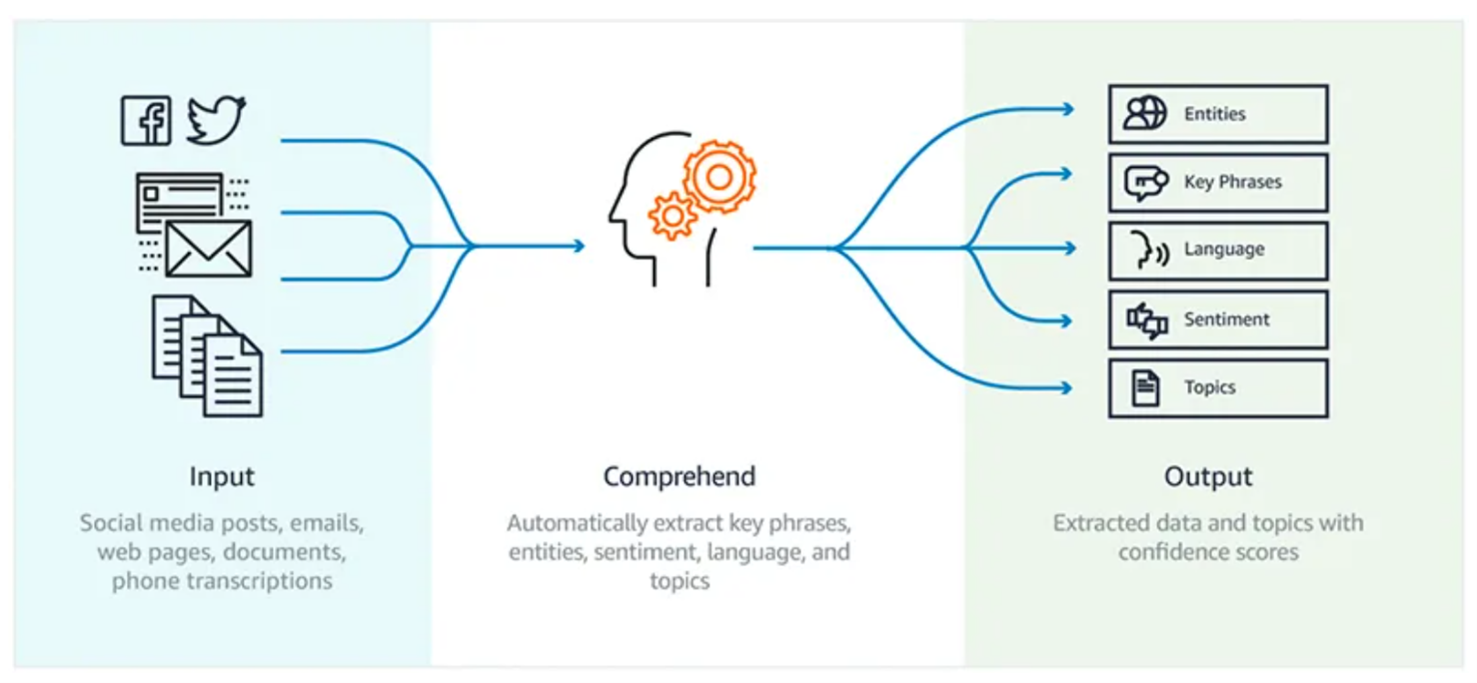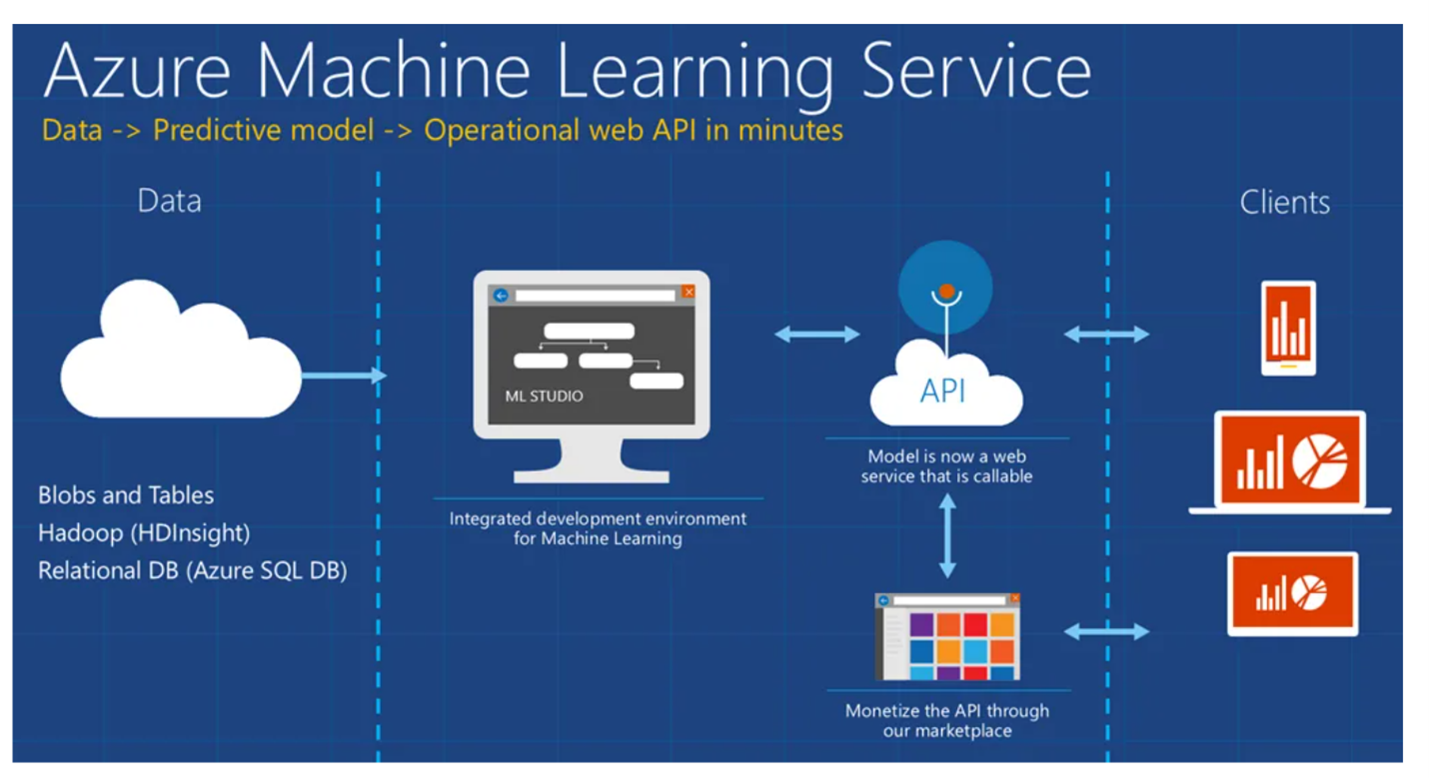
Table of Contents
In recent years, machine learning (ML) has grown in popularity. In fact, it’s become a game-changer for many businesses by solving complicated problems faster than humans can. While the ML market was worth $21.55 billion in 2022, Forbes estimates that it will be worth $305.62 billion by 2032.
Data scientists have most of the technical responsibility to build effective machine learning systems. However, once the ML system is built, it also needs to be maintained and monitored. This is where things can get tricky, and where "Machine Learning as a Service,” or MLaaS, comes into play. MLaaS can be especially helpful if you’re a small- or medium-sized company that doesn’t have the resources needed to build your infrastructure from scratch. In short, the term “MLaaS” refers to cloud-based platforms that use certain ML tools to help you to scale up the way your company uses its data without beginning from square one.
- What Are Eight Critical Steps in the AI Project Life Cycle?
- What Questions Can Machine Learning Help You Answer?
In this article, I’ll talk about some of the most popular MLaaS tools in 2023. The following is a list of them presented in four distinct categories and ordered from least-to-most flexible. However, higher flexibility doesn’t always equal the best solution. In fact, it often means more time required for model development, configuration, and maintenance, so keep that in mind as you read further.
What Are Semi-Specialized Platforms for Language and Vision?
Semi-specialized platforms are categorized by what type of data they are trained to analyze. There are two main types: language and vision. Although there are hybrid tools to analyze both language and vision, hybrid tools are still uncommon and these platforms are not yet as sophisticated as the platforms specialized in language and vision individually. These semi-specialized platforms are great because they’re quick to create a working model. They are not, however, able to tailor the model training process for you.
Language Platforms
Language platforms are used to train custom text models from your data so that the inputs will be the custom text in a specified language. Some examples of language platform tools include MonkeyLearn, Nyckel, Aylien, Lateral, Google AutoML Natural Language, and Amazon Comprehend.
Nowadays there is a new contender, one that could possibly shake up the whole market, and that is OpenAI. While it started as a company focused on research with time data, they have started migrating towards a company that offers their services to those that wish to leverage the power of the many advanced NLP models that OpenAI created. To be more precise, OpenAI will probably be the most popular service provider in the future because of their latest model, ChatGPT. That model by itself has completely overtaken the market, becoming the first online service to reach 100 million users in approximately two months after it launched in November of 2022. While it is not something that can be fully industrialized right now, it is just a matter of time before companies integrate ChatGPT as an essential part of their workflow.
Since ChatGPT is still an experimental tool as a potential MLaaS, let's take a closer look at one of the more mature tools, Amazon Comprehend, which was made to extract key phrases, people, brands, places, and events from a given data set. To be more specific, this MLaaS was designed to comprehend the negative and positive connotations of a text by analyzing it through tokenization, or the process of breaking down a piece of text into small units called tokens. Once that process is completed, Amazon Comprehend automatically organizes text files by topics. You can also use the AutoML capabilities of Amazon Comprehend to build text classification models that specifically meet your needs.

Image Source: https://aws.amazon.com/blogs/machine-learning/analyze-content-with-amazon-comprehend-and-amazon-sagemaker-notebooks/
Some language platform tools also offer data annotation services, where machine learning is used to create accurate labels for a given data set. A great example of this is the crowdsourced Data Labeling Service created by Google. Other tools like Appen also use an allocated annotation platform. However, as mentioned previously, many of these tools will probably be overtaken by ChatGPT and similar AI tools in the future.
Article continues below
Want to learn more? Check out some of our courses:
Vision Platforms
While language platforms use text as input, vision platforms use images or videos. Some examples of these tools are Clarifai, Google AutoML Vision, AutoML Video Intelligence, and Amazon Rekognition. Like language platforms, vision platforms also provide outputs which are, in essence, labels that identify concepts associated with given images or videos. For instance, labels generated by vision platforms can be categories like “internal projects” (as opposed to external projects), or specific team names from within your company.
Hybrid Language-Vision Platforms
In the past there were no tools, at least not highly advanced, that you could use to create workflows that would allow you to combine what you’d use for analyzing language data with what you’d need for analyzing image data. Unfortunately, there still aren’t any that I would personally recommend right now, however it's worth keeping an eye on OpenAI. I mentioned OpenAI earlier as the company that created ChatGPT, but it's worth noting that they also created DALL·E 2, a very advanced computer vision model. Even though DALL·E 2 is used for generating images based on text, which is something pretty niche at best, it is actually very advanced and comparable with some of the models mentioned in the vision platforms section of this article. You can expect that in the future OpenAI will probably try to leverage the fact that they can build both advanced NLP and Computer Vision models to create a platform for those that need to do both. Of course, as OpenAI moves into that space others will probably follow, so we are likely not far off from seeing multi-purpose platforms that offer you the ability to efficiently deal with various types of data.
What Are High-Level Platforms as a Service?
High-level platforms as a Service, or PaaS, are easy to use because they don't require installation and therefore allow you to stress less about infrastructure. Another benefit is that they can automatically detect the type of problem that needs to be solved in your system. For example, high-level PaaS can detect whether a given data set can be used to solve a classification or a regression problem. They can also automatically prepare the data and perform tasks like encoding of categorical variables, feature selection, normalization, and so on. PaaS can automatically configure their learning algorithm, making this kind of tool useful for those with less ML knowledge and experience. Some examples of PaaS tools include Google AutoML Tables, Google Time Inference API, BigML, and Microsoft Azure ML.
Let’s take a closer look at the Microsoft Azure ML tool. Microsoft Azure ML is essentially an MLaaS platform that has two model authoring environments: Automated ML and Designer. While Automated ML helps you create models quickly, Designer is an environment that allows the you to view and edit model training pipelines, making it easier to not only understand your own pipelines but to catch potential errors.

Image Source: https://techcommunity.microsoft.com/t5/azure/how-to-get-started-with-azure-machine-learning/m-p/54679
As an alternative, you also have the many MLOps tools that AWS offers. MLOps tools are not exactly as easy to use as the aforementioned MlaaS tools and require more knowledge of ML, so they are not necessarily designed for companies that don't have ML experts. What MLOps tools do offer, however, is the ability to augment the work of one person to allow them to handle the workload of multiple people with ease.
How to Use Self-Hosted Studios
Self-hosted studios are based on standard, open-sourced machine learning libraries which allow you to customize both libraries and code. A notable advantage of self-hosted studios is that they help you avoid “lock-ins,” a term referring to being stuck with a specific company or vendor due to their exclusive language or knowledge in the tool you’re using. With self-hosted studios, you can export ML pipelines as Python scripts and keep them readily accessible for you or others. Another advantage of self-hosted studios is that you can also export trained models to different open formats.
On the other hand, self-hosted studios are considered low-level solutions compared to the other MLaaS tools in this list. These solutions are not offered as a service and need to be installed and hosted on your own machines. This can make everything more expensive and difficult to use if you’re just getting started with machine learning. Some notable self-hosted studio tools are DataRobot, Rapidminer, and Dataiku. All of these tools offer Designer and AutoML features.
What Are Cloud Machine Learning IDEs?
Cloud machine learning Integrated Development Environments, or IDEs, are powerful GPU-equipped virtual machines provided by Cloud platforms that simultaneously offer Jupyter Lab environments on pre-configured infrastructures. These IDEs run experiments more efficiently and can even do so 24/7. They are also able to scale experiments up to run on CPUs with many cores, as well as CPUs with powerful GPUs, plenty of RAM, and pre-configured clusters.
However, Cloud ML IDEs are also known to have low-level features compared to ML studios. While low-level features are intended to increase flexibility and core model access for advanced users, they can in some cases make model development, configuration, and maintenance a more time-consuming job than it needs to be. Some examples of Cloud ML IDEs are Floyd, Google AI Platform Notebooks, Databricks, Amazon SageMaker, IBM Watson Studio and Faculty.ai.
This is not an exhaustive list of MLaaS tools, and more importantly, you should choose the most suitable tools based on your needs and application. Even if you’re new to machine learning, many tools require little-to-no experience to get started. As technology continues to advance, you may wonder if it’s worth it to build your own tools and models. Purchasing a MLaaS solution—as opposed to starting from scratch—has many advantages. Once you’ve decided that you may benefit from machine learning, you’ll be ready to pick the right tools for you and begin to work toward success.



